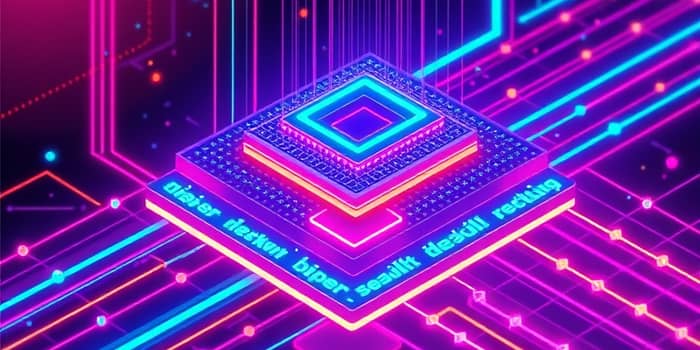Blockchain technology promises a world of decentralized applications, financial inclusion, and programmable trust. Yet as networks grow, congestion, high fees, and slow confirmations threaten that vision. Layer Two solutions emerge as the transformative answer, empowering blockchains to scale while preserving their core values.
Why We Need Layer 2
In today’s leading Layer 1 networks, throughput is limited to roughly 15–30 transactions per second. Demand spikes during popular token launches or DeFi rallies can push fees skyward, pricing out everyday users. This creates a bottleneck for decentralized finance, gaming, and micropayments alike.
Layer 2 protocols exist to offload transaction processing from the main chain and unlock the full potential of blockchain ecosystems. By introducing secondary networks, we can alleviate network congestion, reduce costs, and allow blockchains to support millions of users around the globe.
Defining Layer 2 Solutions
At their core, Layer 2 solutions are specialized frameworks built atop an existing blockchain—be it Bitcoin, Ethereum, or other smart-contract platforms. They operate off-chain or in parallel, yet anchor their security back to the base layer through cryptographic proofs and smart contracts.
Think of Layer 1 as a highway at capacity. Layer 2 adds exit ramps, express lanes, and side roads that handle local traffic. Vehicles (transactions) travel swiftly, then merge back onto the main road for final settlement. This analogy captures the balance between speed, cost, and security.
Technical Mechanisms Powering Layer 2
Different Layer 2 designs employ varied mechanisms, but common elements include off-chain processing, smart-contract anchoring, and proofs to ensure validity.
• Off-chain Processing: Transactions are batched or routed in private channels, alleviating the main chain’s burden.
• Smart Contracts: On-chain contracts guarantee finality, lock funds, and resolve disputes, anchoring trust to Layer 1.
• Fraud and Validity Proofs: Participants submit proofs—either optimistic fraud challenges or zero-knowledge cryptographic statements—to ensure that off-chain computations are honest.
Main Types of Layer 2
Several distinct architectures have emerged, each trading complexity, security, and latency in unique ways.
Real-World Examples and Adoption
Leading Layer 2 networks demonstrate the tangible impact of scaling solutions. Polygon, an ecosystem combining Plasma and zkEVM rollups, supports over 19,000 decentralized applications. Optimistic rollups like Arbitrum and Optimism collectively secure billions of dollars in total value locked.
Zero-knowledge platforms such as zkSync and StarkNet process transactions with near-instant transaction confirmations off-chain, driving new use cases in gaming, DeFi, and microtransactions. The Bitcoin Lightning Network, a pioneer in state channels, has grown to over 5,000 BTC in capacity, enabling swift, low-cost payments worldwide.
Benefits of Layer 2 Adoption
- Scalability skyrockets into thousands of transactions per second, unlocking mass-market applications.
- Cost efficiency with significantly reduced fees, making micropayments economically viable.
- Enhanced throughput delivers near-instant transaction confirmations off-chain, improving user experience.
- Preserved security of the base layer through robust cryptographic anchors and checkpointing.
- Greater interoperability as bridging solutions connect assets across multiple chains and Layer 2s.
Challenges and Limitations
Despite their promise, Layer 2 solutions come with trade-offs. Many require specialized wallets and bridges, adding complexity for users and developers. Liquidity fragmentation can emerge when assets are spread across multiple protocols, hindering seamless capital flows.
Sidechains may sacrifice some degree of decentralization if their validator sets are smaller. Optimistic rollups introduce a fraud challenge window before final withdrawal, sometimes lasting days. Ultimately, all Layer 2 networks remain dependent on the health and stability of their underlying Layer 1 blockchains.
Emerging Trends and the Future of Layer 2
- Inter-L2 Bridges: Platforms enabling fluid transfers and composability across different Layer 2 networks.
- Decentralized Sequencers: Next-generation transaction ordering systems to minimize central points of failure.
- User Experience Abstraction: Wallets and interfaces that seamlessly route transactions on the optimal Layer 2 without user intervention.
Conclusion
Layer 2 solutions represent a critical evolution in blockchain infrastructure. By offloading transaction processing from the main chain and elegantly balancing speed, cost, and security, they pave the way for decentralized finance, gaming, and everyday payments at global scale.
As innovation continues—from ZK-rollup optimizations to interchain bridges—Layer 2 networks will drive mainstream adoption, bringing the promise of blockchain to billions. Developers, entrepreneurs, and users alike should embrace these advancements, building and participating in ecosystems that scale without compromise.
References
- https://tokenminds.co/blog/blockchain-development/layer-2-solutions
- https://www.osl.com/hk-en/academy/article/what-is-layer-2-and-how-does-it-work
- https://www.starknet.io/blog/layer-2-scaling-solutions/
- https://www.kaleido.io/blockchain-blog/layer-two-l2-blockchains
- https://www.moonpay.com/learn/blockchain/what-are-layer-2-solutions
- https://www.coinbase.com/learn/crypto-basics/what-are-ethereum-layer-2-blockchains-and-how-do-they-work
- https://www.kraken.com/learn/layer-2-solutions
- https://www.ledger.com/th/academy/layer-2-blockchains-explained










